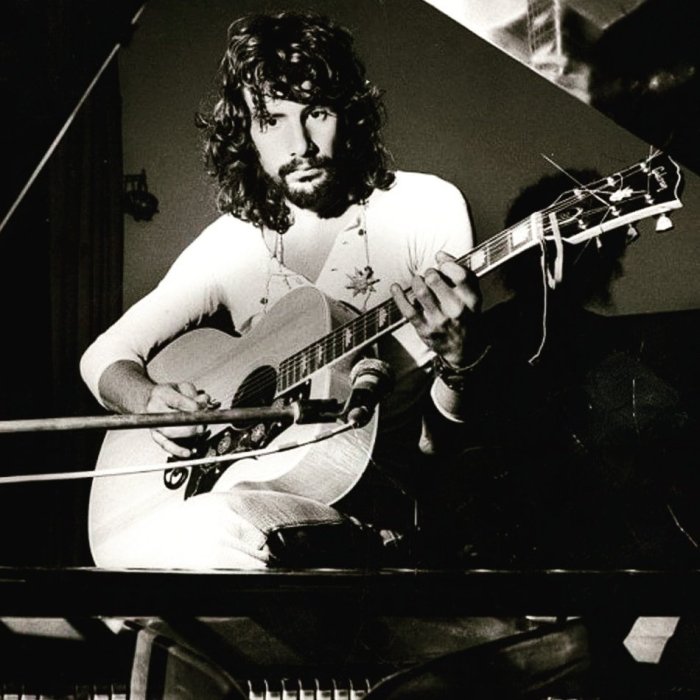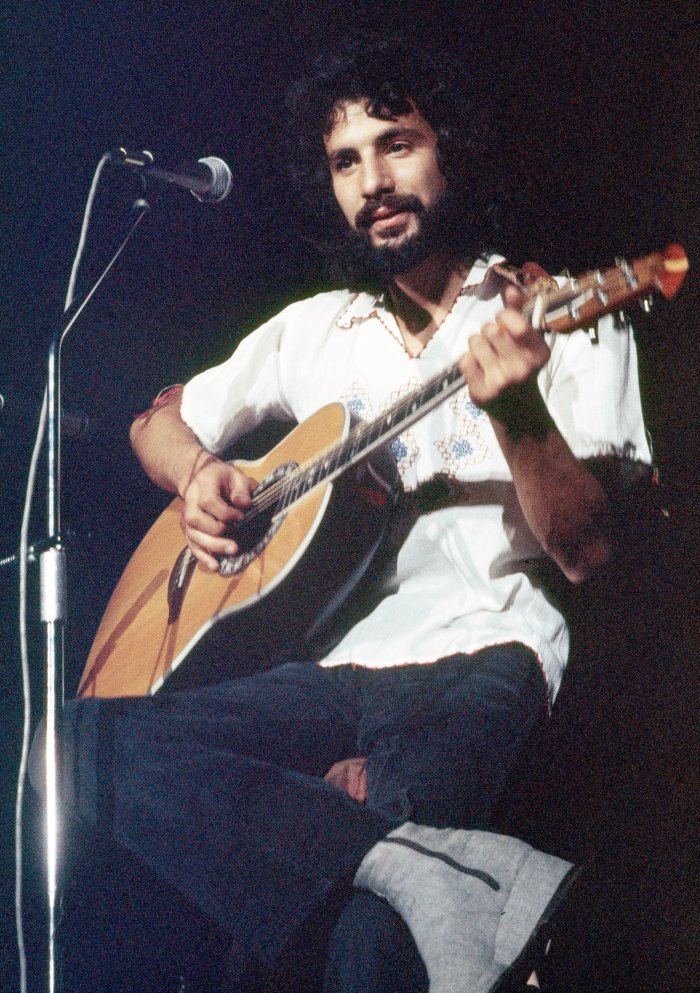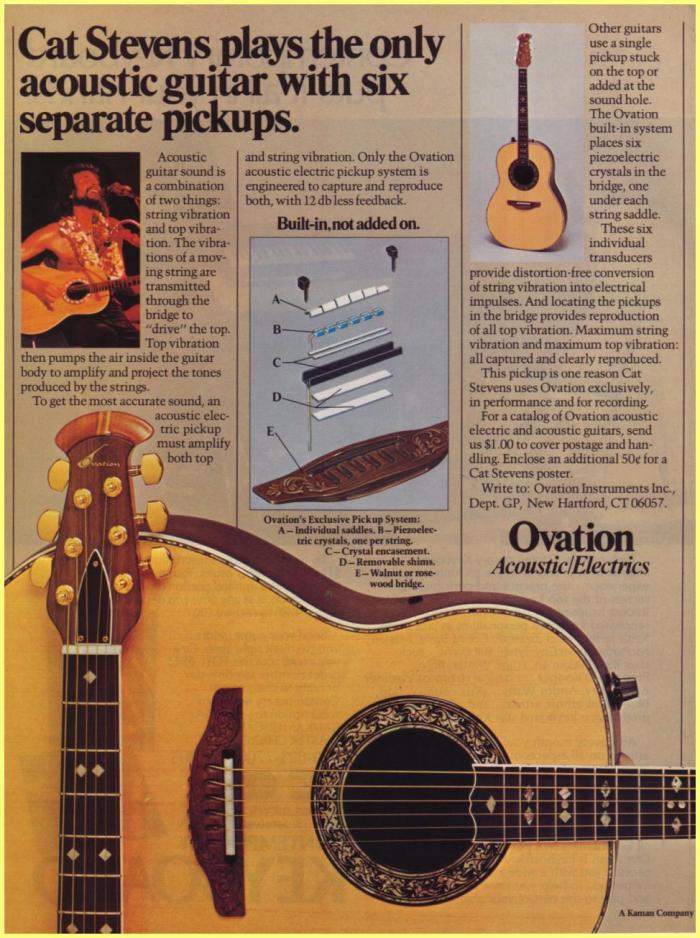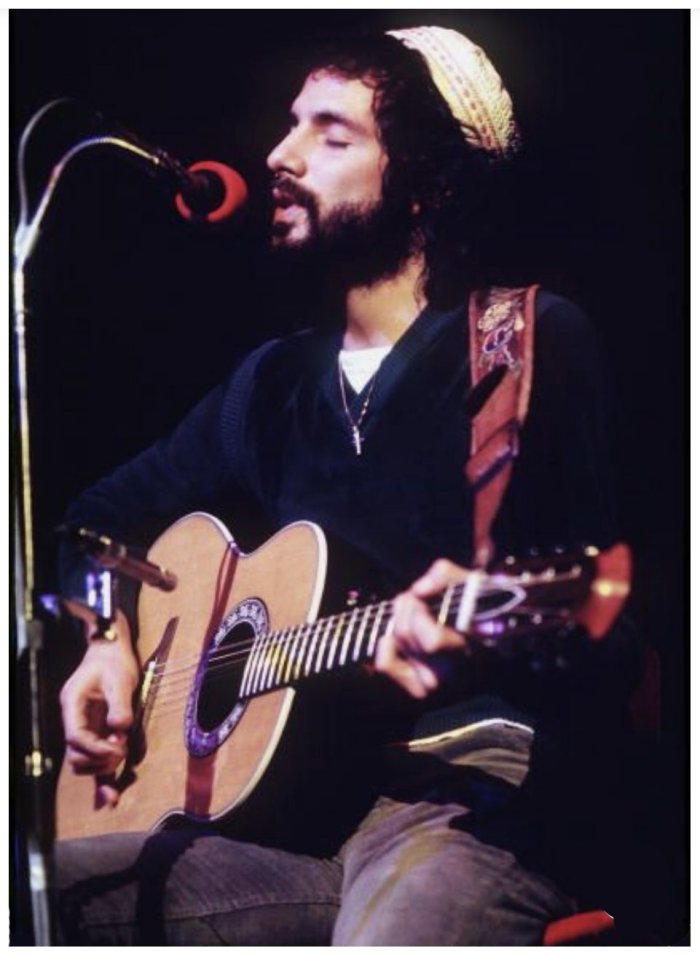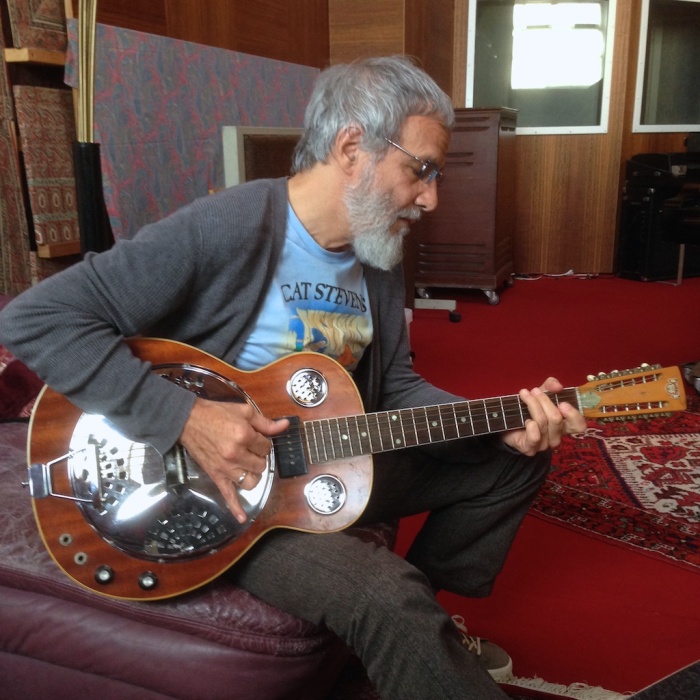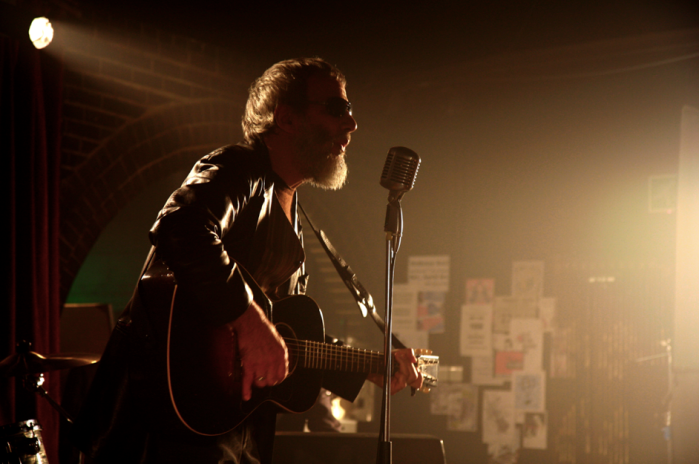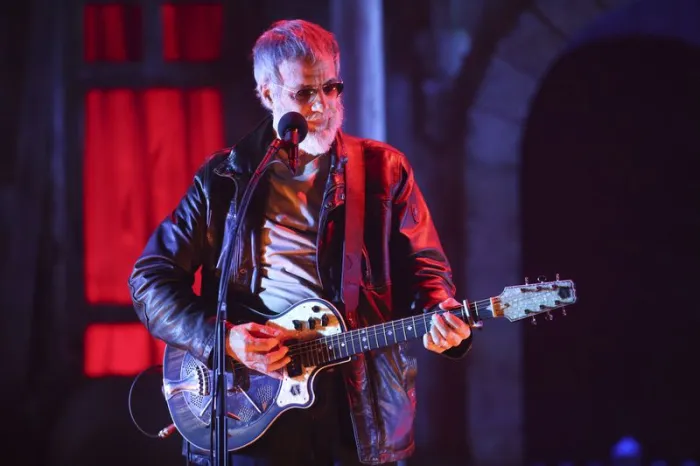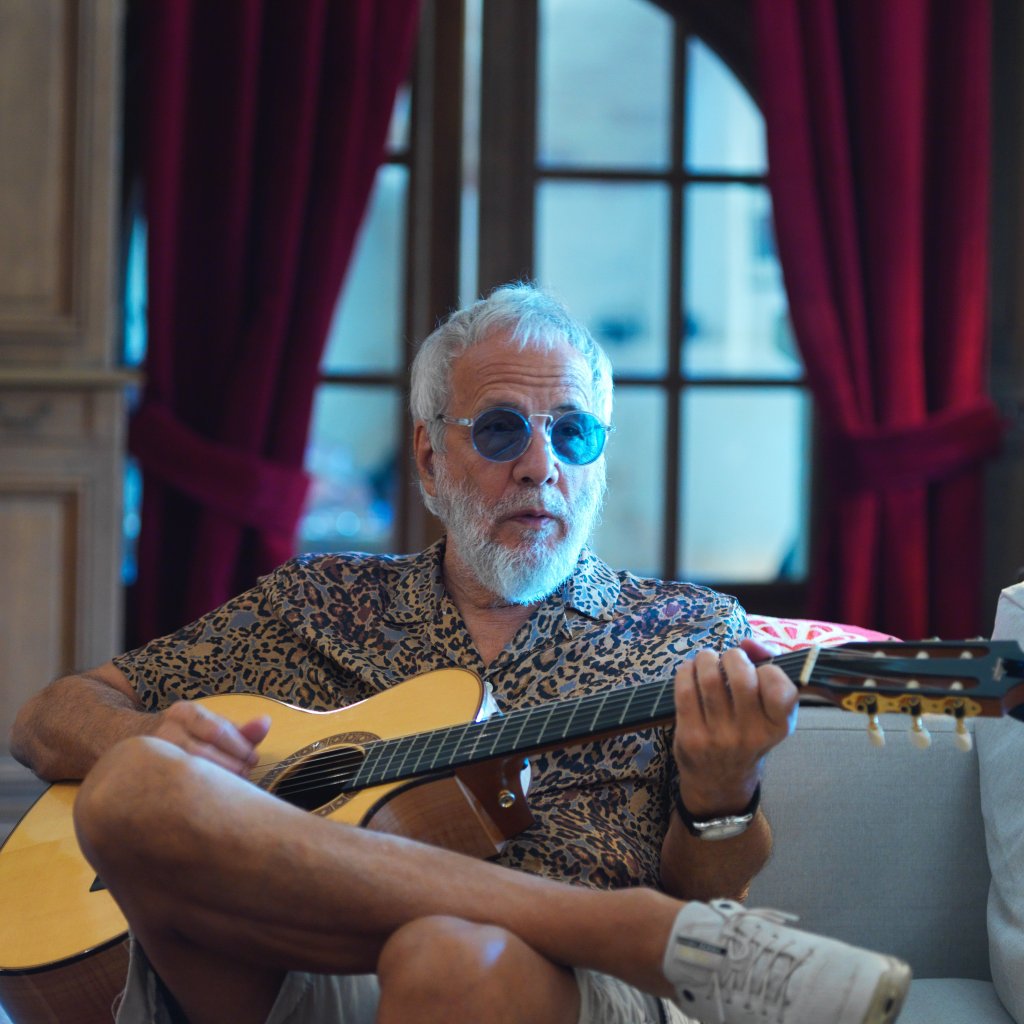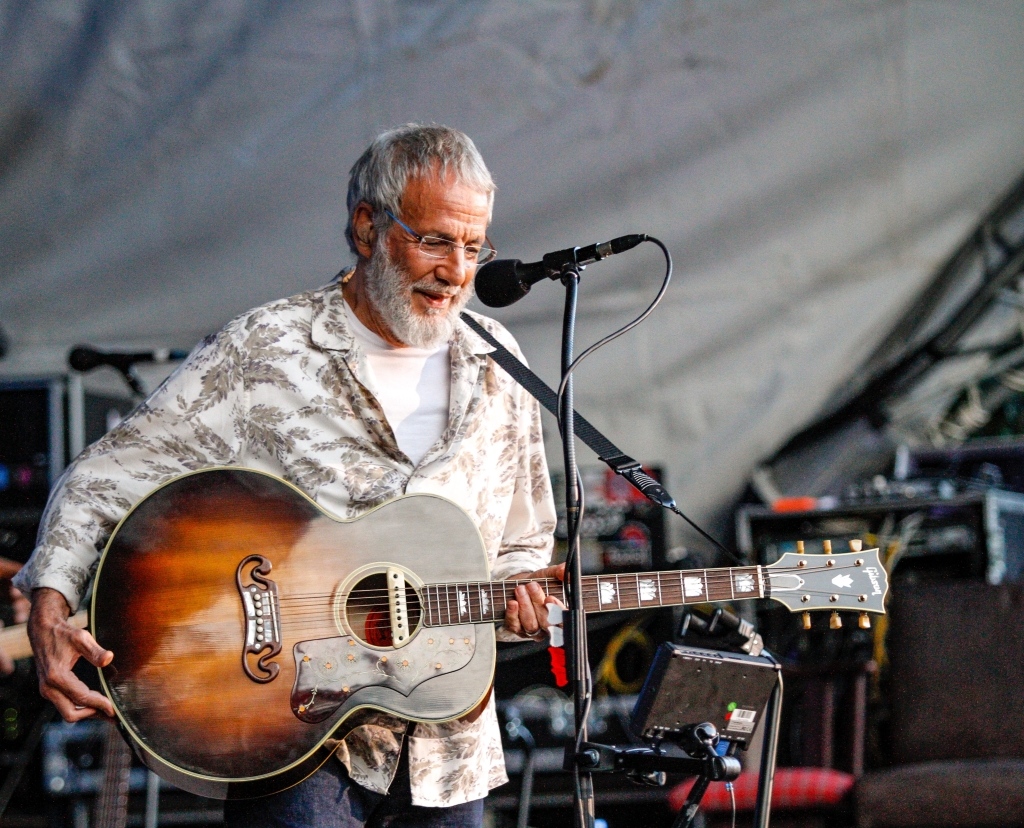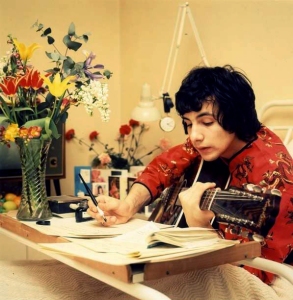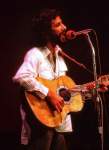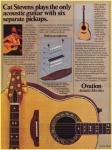Throughout his multiple careers in the music business Cat has played guitars of various major brands on stage and in the studio. He is perhaps best known for playing Gibson guitars, most notably J-200 jumbo guitars of various kinds and vintages.
“I really turned a corner when I got my hands on a black Gibson Everly Brothers J-180. It was my favourite guitar, I just loved it. It was really dynamic and it had a very easy action, very thin neck. It was just such a beautiful instrument, too.”
Cat Stevens, Guitar World article (Feb. 22, 2021)
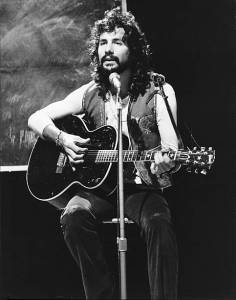
A Short History
Cat’s very first guitar was an inexpensive classical nylon-string guitar for just eight pounds made by Eko, an Italian guitar company that became the largest guitar exporter in Europe in the 1960s. “It was pretty cheap and didn’t sound that great, either,” said Cat in a Guitar World article from February 22, 2021. “All the problems you have learning the guitar were quadrupled by the fact it had such a high action, and I didn’t understand what strings to use or what gauge. So I was trying to keep my fingers down and make the notes as clear as possible.”
Cat’s early compositions like “The First Cut Is The Deepest” led Cat’s brother, David, to convince their father to advance 80 pounds for Cat’s first better guitar, a Hagström 12-string. “I loved 12-strings because I was always a fan of Lead Belly. Those kind of early blues-folk songs were also relatively easy to learn as well. And the Hagström sounded loud, which was great.”
In 1969 Cat contracted tuberculosis and had to rest for a year. “By that time I had got myself an electric guitar – a Gibson 355 or 335, I think [Ed: It was an ES-335.] – and I had my little Fender amp and I’d written some really wonky songs… it was a blip [laughs]. But I was still looking for the right moment for things to happen and for me to find out what I wanted to do next.”
His black Gibson Everly Brothers Flattop guitar, so prominently featured in the official “Father and Son” and rediscovered “Lady D’Arbanville” music videos, has perhaps become the most iconic of Cat’s guitars, not least for the fact that Cat composed, recorded and toured with it extensively.
In 1969 Cat bought his Gibson Everly guitar in London’s famous Selmer’s Music Shop. “I really turned a corner when I got my hands on a black Gibson Everly Brothers J-180. It was my favourite guitar, I just loved it. It was really dynamic and it had a very easy action, very thin neck. It was just such a beautiful instrument, too.” The story goes that the guitar was later stolen from his home at some point during the 1970s, and only subsequently, by some happy little accident, reacquired by Cat’s son, Yoriyos, somewhen in the 2000s.
In spirit the Gibson Everly is a downsized J-200, Gibson’s large flagship jumbo guitar. It features a sitka spruce top, maple back and sides, a mahogany neck and an oversized adjustable bridge designed by Ike Everly himself, where the strings anchor through the bridge. Not least for its mini-jumbo shape and a slightly thinner body than a Gibson J-185, the Gibson Everly is an extra comfortable guitar to play. Tuxedo look, prominent double moustache pickguards and star inlays in the fingerboard and on the peghead make it a striking guitar for stage performances. While Gibson discontinued the model in 1972, they reissued it in 1986 as the J-180 model with slightly modernized specs. In 2022 Gibson released a custom-shop guitar, the Cat Stevens J-180 Collector’s Edition, based on Cat’s original 1969 Gibson Everly and limited to only 50 units worldwide.
“But, of course, [my Gibson Everly] didn’t have any [means of] amplification, and so here we get to the problem. Because in the old days, how do you mic an acoustic? There was always a horrible, horrible ever-present feedback. You couldn’t really play that loud. That guitar got supplemented later with things like the Ovation – but the Ovation was just a necessity because it really wasn’t a guitar that you wanted to play.”
The late 1970s was a time period when Ovation revolutionized the acoustic guitar-making industry with their innovative Lyrachord roundback and no-feedback electric pickup system. Almost the entire music business even beyond the United States can be seen using Ovation guitars at the time—not only on stage but in the studio as well. On the Majikat Earth Tour Cat performed exclusively with various Ovation acoustic/electric guitars, most notably an Ovation Legend 1617, Custom Legend 1619 and an Ovation Folklore 1614 with its wider neck.
The world hit “Wild World” from the album Tea for the Tillerman (1970), with its immediate bass picking, was also recorded using an Ovation acoustic/electric guitar. According to Cat’s producer Paul Samwell-Smith, “The electric pickup signal [was used] on the left of the stereo and the acoustic microphone signal on the right, which gave [the song] a very present and immediate sound.”
Cat directly credited Ovation guitars as being used on albums like Numbers (1976) and Izitso (1977). In the booklet of An Other Cup (2006) there is also a photo of Cat performing with an Ovation Legend, presumably in the studio.
Cat’s Every Guitar
This is an effort to document each and every guitar model Cat has ever played and been photographed with.
Minor variations in models are mostly neglected.





